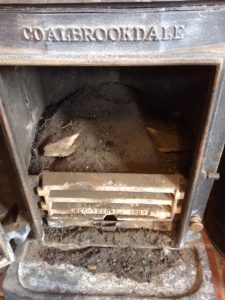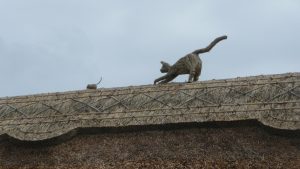I recently swept the flue for this rather attractive large Double-Sided Woodwarm Stove. This stove was in a house in Wenvoe South Wales. I spent two days in South Wales doing some sweeping work for friends and family in and around Wenvoe; a sort of bus-man’s holiday if you will. It actually made a pleasant change to do sweeping work in a different area. As you can see from the photos this stove burns very well, so much so it immediately attracted someone who wanted to warm themselves and have a sleep in front of a friendly fire.

Wenvoe has been the center of thriving a farming community for centuries, and indeed a number of the properties a I swept for were large farm houses or converted barns. The village originally developed around the parish church of St. Mary, which can be traced back to the twelfth century with the adjacent locality now being a conservation area. Wenvoe is recorded as having belonged to the De Sully, le Fleming and Malefaunt families in the later medieval periods. After being escheated to the crown the castle of Wenvoe belonged successively to the Thomas, Birt and Jenner families. Major development occurred in the 1770s but much of this was obliterated by a fire in 1910. Some medieval or earlier fortification is also known to have existed in the wooded hillside at Wrinstone.

Local attractions include:
The St Lythans Burial Chamber (Welsh: Siambr Gladdu Lythian Sant) is only 2 km (1¼ miles) west of Wenvoe, or about 4.5 km (2.8 mi) by road, past the village of S Lythans (Welsh: Llwyneliddon). The St Lythans Burial Chamber is a single stone Megalithic dolmen, built around 6,000 BP (before present) as part of a Chambered long barrow, during the Neolithic period.
The Tinkinswood Burial Chamber (Welsh: Siambr Gladdu Tinkinswood) is about 3.5 km (2½ miles) north west of Wenvoe, near the village of St Nicholas (Welsh: Sain Nicolas), or about 6 km (3¾ miles) by road towards Bonvilston (Welsh: Tresimwn). Tinkinswood is a more extensive cromlech than St Lythans, which it may have once resembled, and was constructed during the same period.
 Between the St Lythans and the Tinkinswood Burial Chambers lies Dyffryn Gardens (Welsh: Gerddi Dyffryn), the estate to which both burial chambers once belonged. Dyffryn Gardens is a collection of botanical gardens located near the village of St. Nicholas. They were selected by the British Tourism Association as one of the Top 100 gardens in the UK.
Between the St Lythans and the Tinkinswood Burial Chambers lies Dyffryn Gardens (Welsh: Gerddi Dyffryn), the estate to which both burial chambers once belonged. Dyffryn Gardens is a collection of botanical gardens located near the village of St. Nicholas. They were selected by the British Tourism Association as one of the Top 100 gardens in the UK.


 My name is Paddy McKeown, I am a retired police officer (Detective Sergeant – Metropolitan Police), turned chimney sweep. I have completed training with ‘The Guild of Master Chimney Sweeps’, and Rod Tech UK (Power Sweeping).
My name is Paddy McKeown, I am a retired police officer (Detective Sergeant – Metropolitan Police), turned chimney sweep. I have completed training with ‘The Guild of Master Chimney Sweeps’, and Rod Tech UK (Power Sweeping).
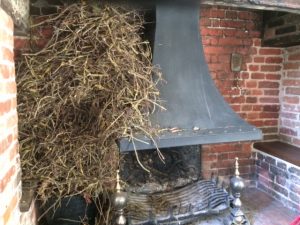
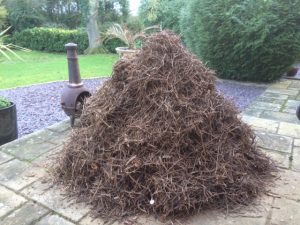
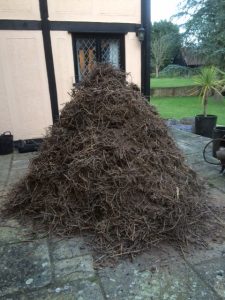
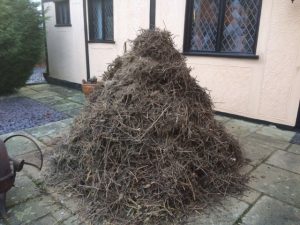
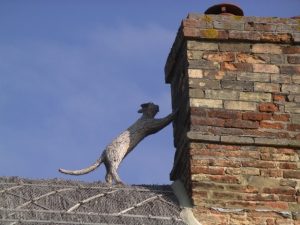
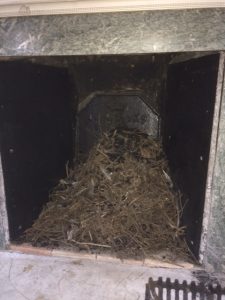
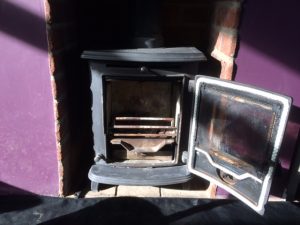 I considered the best way to sweep this problematic chimney was to power sweep it using liner rods and brush. I did this and found that after every three rods (the chimney was 9 and a half meters tall), the stove was full of tar deposits and had to be cleaned out manually using a large trug and small shovel. I carried on this process until the entire flue had been swept and I had removed one and a half trugs full of tar from the stove. I was then able to tidy up and finish cleaning the stove using the vacuum before putting it back together again. Upon discussing the operation of the stove with the customer I discovered that in the intervening year he had altered his burning habits. He had started using a lot more coal and had taken to stocking the stove up prior to bed time and closing it right down to keep it in for the morning. The customer was tactfully and appropriately advised regarding the operation of his appliance and was pointed to the Guild of Master Sweeps ‘burn right campaign –
I considered the best way to sweep this problematic chimney was to power sweep it using liner rods and brush. I did this and found that after every three rods (the chimney was 9 and a half meters tall), the stove was full of tar deposits and had to be cleaned out manually using a large trug and small shovel. I carried on this process until the entire flue had been swept and I had removed one and a half trugs full of tar from the stove. I was then able to tidy up and finish cleaning the stove using the vacuum before putting it back together again. Upon discussing the operation of the stove with the customer I discovered that in the intervening year he had altered his burning habits. He had started using a lot more coal and had taken to stocking the stove up prior to bed time and closing it right down to keep it in for the morning. The customer was tactfully and appropriately advised regarding the operation of his appliance and was pointed to the Guild of Master Sweeps ‘burn right campaign – 

